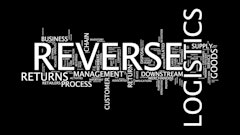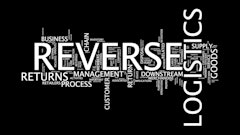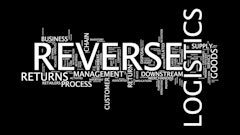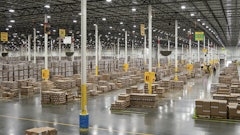
For retailers, there are few industry patterns that can cause the level of disruption that reverse logistics can, and with the escalation of ecommerce purchases and the ease of returns, this disruption is plaguing most non-food retailers today. Whether it is the cost of arranging returns, or the number of items that go unsold once returned, the potential effect of mismanagement of the reverse supply chain can significantly alter business success.
With the National Retail Foundation projecting total returns for the retail industry would reach $890 billion in 2024, and with 76% of consumers considering free returns a key factor in deciding where to shop, the evidence suggests that the topic of returns is a hot-button issue for both retailers and their customers.
More than two-thirds of retailers surveyed say they are prioritizing upgrading their returns capabilities within the next six months, with many turning to RFID tagging and the increased inventory accuracy it brings. But how can RFID help to alleviate the knock-on effects that returns can have upon a business's overall operation?
How do businesses currently handle returns?
For retailers, the reverse supply chain is often an unending headache. Brands are expected not only to provide a simple returns service, but are also expected to do so in ways that allow customers to return products and receive refunds quickly so that they can reintroduce items in good condition back into the sellable pool. This combination of determining factors means that, without careful management, the reverse logistics of a brand's operation can be costly, not just financially, but in increased labor time and fragmented business operations.
In addition to the cost associated with returning products to the retailer in the first place, items also often have to go through several bottlenecks before they can be returned to the shop floor. From warehouse inspection to delivery inclusion and in-store re-stocking, each stage increases the opportunity for products to go missing, or to be delayed, preventing items from being re-sold at full value or even re-sold at all.
In the 2024 holiday season, Salesforce found that shoppers sent back more than $112 billion in merchandise globally, up 28% on the year prior, highlighting the scale of the returns dilemma. The sharp year-on-year increase is expected to continue into 2025 and beyond, with ‘haul’ culture growing amongst shoppers - when customers buy numerous similar items with the full expectation that at least some of them will be returned.
As a result of this upward trend, and the financial and organizational implications, retailers must continue to better their reverse supply chain to help minimize the effects of returns on their operation, finding ways to funnel items back onto the shop floor to maximize sales opportunities.
How can item-level RFID be used to improve the effectiveness of the reverse supply chain?
One of the key factors in improving and streamlining the reverse supply chain, which includes distribution centers and stores, is through product visibility at the item level (style/size/color). Items that are returned can often end up sitting in stores or getting lost within the supply chain, unknowingly waiting to be returned to the shop floor. As a result, items can often go un-sold having never made it back to the store, or failing to arrive before product lines change and stock becomes outdated. Both of these scenarios lead to missed sales opportunities and financial loss.
To combat this, many retailers are turning to item-level RFID. With RFID tags attached or embedded into products and required within returns policies, retailers gain up to 98% accurate visibility over stock including associating a “grade” of each individual item. Combined with the right RFID software, retailers can easily track product location and status in near-real time as items pass through read points in a reverse supply chain. With the use of AI, this enhances the decision-making process and allows them to quickly identify items that need to be placed back into stores. By creating this visibility, retailers can increase the speed of the reverse logistics process, increasing the likelihood of re-selling items as close to full price as possible and improving the customer experience.
With RFID, brands can create reverse supply chains that are more efficient, more effective and with less shrink compared to traditionally managed and operated reverse logistics.
How RFID in the reverse supply chain supports customer experience
For retailers that choose to operate with RFID, the effects of tagging items go beyond the improved operation of the reverse supply chain. The customer experience, crucial in building brand loyalty and trust, is also positively impacted by the increased visibility, as brands become able to operate better omnichannel methods.
RFID allows retailers to set up buy online, return in-store (BORIS) operations. This allows customers to choose between having couriers collect items from their own homes, or dropping them off in-store, reducing the cost of returns couriers for the business and providing customers with options that better fit around their own needs.
By choosing to return in-store, customers, who can choose to accept refunds in the shape of store credit or replacement items, get a chance to select alternative items or sizes while returning. This introduces a second chance at a sales opportunity for the retailer by exposing the returned items quickly to the ecommerce platform and benefits the customer who is more likely to leave with an experience that is worth returning for. To make this possible, brands must achieve the level of accuracy associated with RFID tagging, as stores must be able to guarantee that alternative items being offered are in stock and available, so as not to worsen a customer's negative shopping experience.
RFID as a vehicle for a succinct reverse supply chain
For retailers who are looking at a returns market that is causing significant challenges within the industry, equipping staff with the technology to manage the reverse supply chain is crucial to fulfilling a key retail touchpoint. With returns now a serious factor of consideration for customers in choosing which brand to shop with, having a reverse supply chain that is efficient for staff and customers alike is crucial in maximizing all sales opportunities, whilst protecting return on investment by minimizing the losses that can occur when trying to perfect reverse logistics.

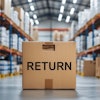
![Pros To Know 2026 [color]](https://img.sdcexec.com/mindful/acbm/workspaces/default/uploads/2025/08/prostoknow-2026-color.mduFvhpgMk.png?auto=format%2Ccompress&bg=fff&fill-color=fff&fit=fill&h=100&q=70&w=100)



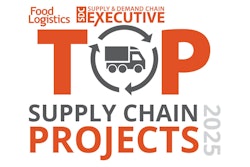


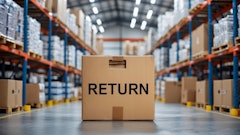
![Pros To Know 2026 [color]](https://img.sdcexec.com/mindful/acbm/workspaces/default/uploads/2025/08/prostoknow-2026-color.mduFvhpgMk.png?ar=16%3A9&auto=format%2Ccompress&bg=fff&fill-color=fff&fit=fill&h=135&q=70&w=240)
